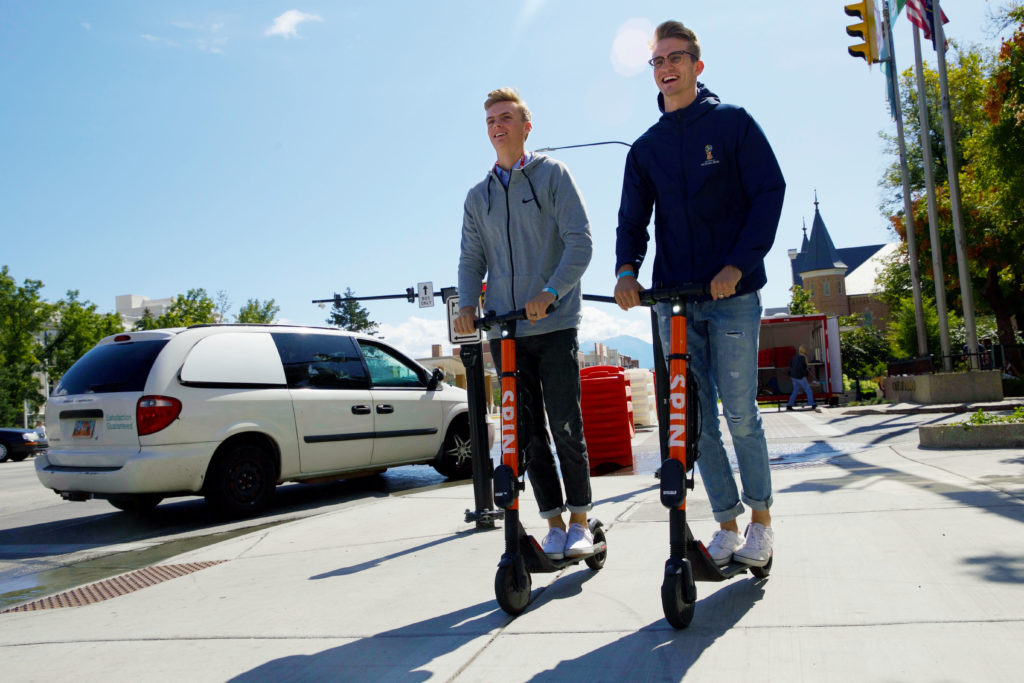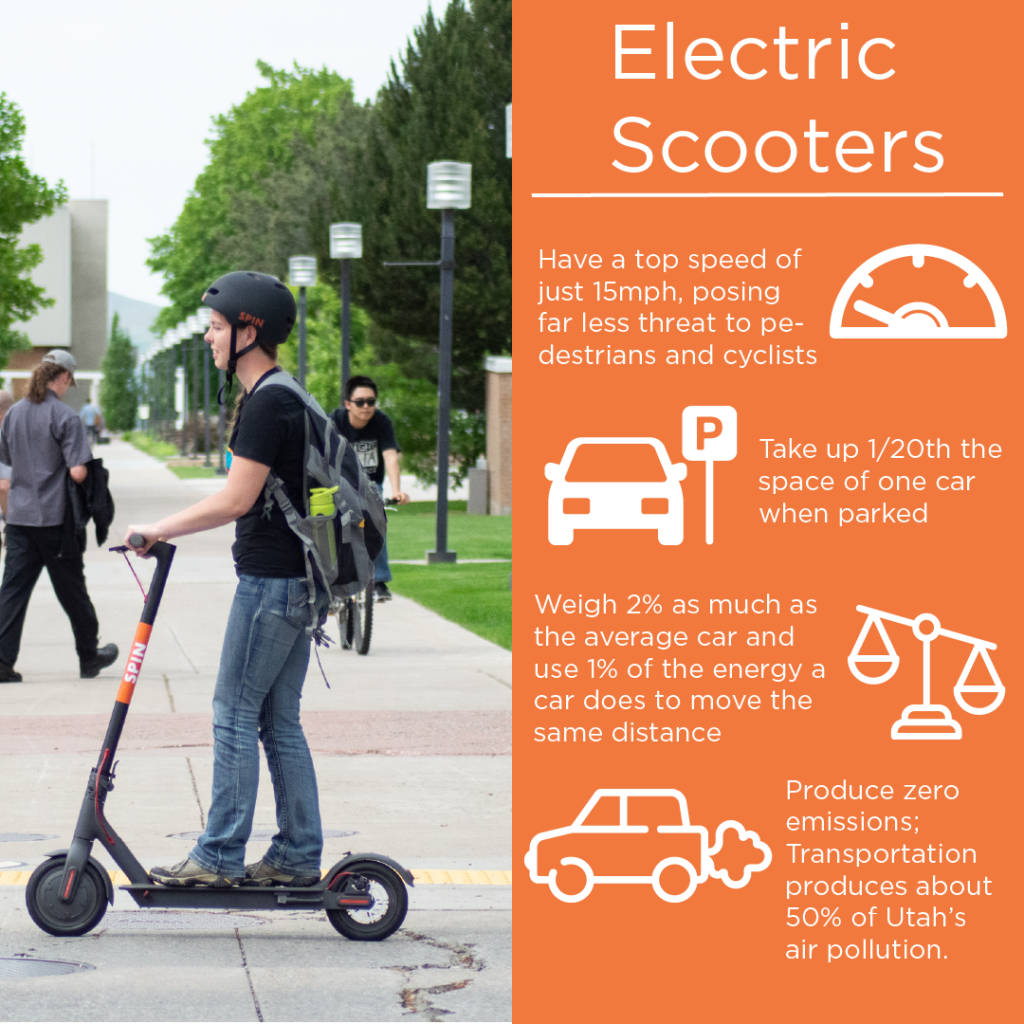
Electric scooters made their first appearance on the streets of Provo on Aug. 8 and have exceeded the expectations of Zagster, the company that owns the scooters. However, some Provo residents wish users were more cautious while riding them.
“I agree that there are legitimate reasons to have the scooters here,” Provo resident Kendal Hunter said. “I just think there could be some better training.”
In a Facebook group for Provo residents, some have complained about scooters blocking bus stops and scooter users riding at top speed on narrow sidewalks.
Joni McIntire, another Provo resident, said in a Facebook message that she has been forced off the sidewalk by the scooters multiple times while walking her dogs.
Both Provo City and Zagster said they officials are aware of these problems and hope to help solve them going forward.
When the scooters were released, the city made infographics detailing how to park and ride the scooters safely and a video demonstrating proper use.

In addition, the city is trying to combat both scooter and bike riding on the sidewalks by creating a bike master plan. This plan lays out where future bike lanes and facilities will be placed when street reconstruction occurs. One example is the reconstruction happening on Bulldog Boulevard.
“That’s going to get the state’s second protected bike lane, where there is literally a concrete barrier between the cars and you riding a bike,” Provo parking and sustainability coordinator Austin Taylor said.
Phil LeClare said that when scooters are new, cities experience growing pains as the community adjusts. Zagster is dedicated to helping a city during all phases of a scooter program’s life by having operations teams in each city, LeClare said.
“We look at it as ultimately trying to control some of the chaos that in some instances has gone along with micromobility,” LeClare said. “There’s learning that comes along with starting a program and then finding out over time what works in different communities.”
Micromobility refers to the use of scooters and bikes as modes of transportation. Cities like Provo see these programs as ways to make residents safer, encourage them to shop locally and save space taken up by parking stalls. In Provo, the environmental benefits from micromobility were a major consideration in deciding to bring scooters to town.

Taylor said that according to a survey conducted in Portland, another scooter city, around 34% of riders would have taken a car if they did not have access to a scooter. If that percentage is applied to Provo, Taylor said the scooters would reduced vehicle travel by about 12,000 miles.
Residents said they appreciate these benefits, but are also frustrated that many scooter riders don’t follow rules regarding parking and riding on the sidewalk.
“That totally helps with air pollution and inversion,” Taylor said. “Northern Utah regularly gets some of the worst air quality in the nation.” Taylor added that in Northern Utah, about half of the air pollution comes from cars and trucks.
According to Taylor, the scooters are averaging around three rides per scooter, per day. These kinds of numbers indicate that there is a high demand for the scooters, and Zagster might consider bringing more scooters to the city.
“We’ve been really pleased with the uptake of micromobility programs and usage in Utah as a whole and certainly in Provo,” LeClare said. He said that scooters were introduced in Orem this week because of their popularity in Provo.




